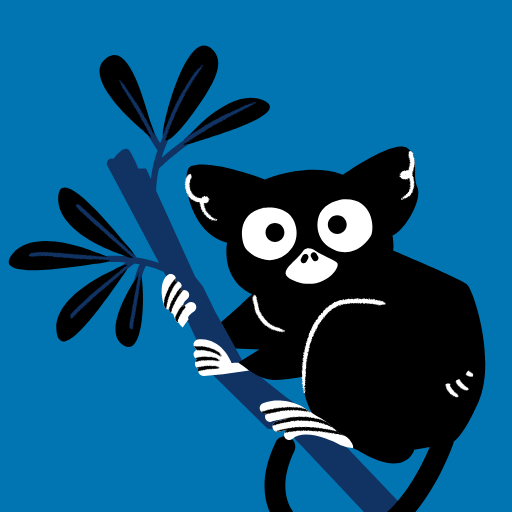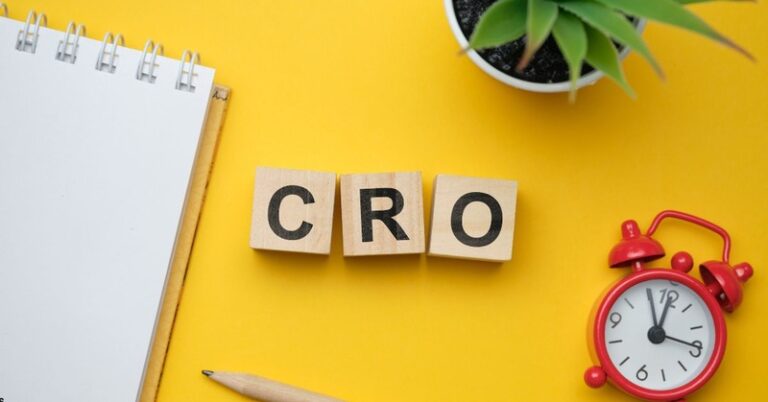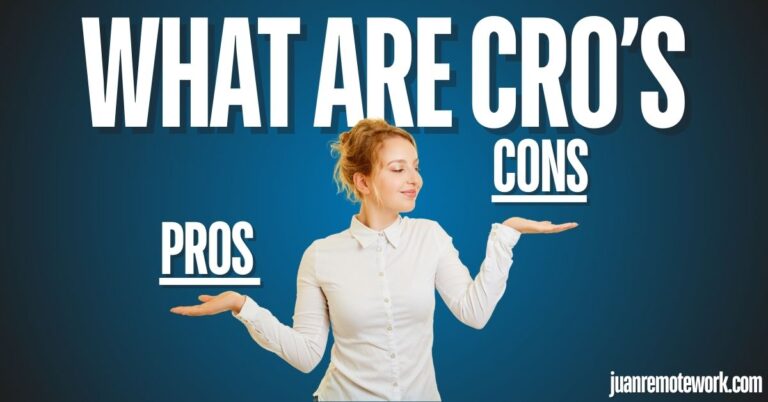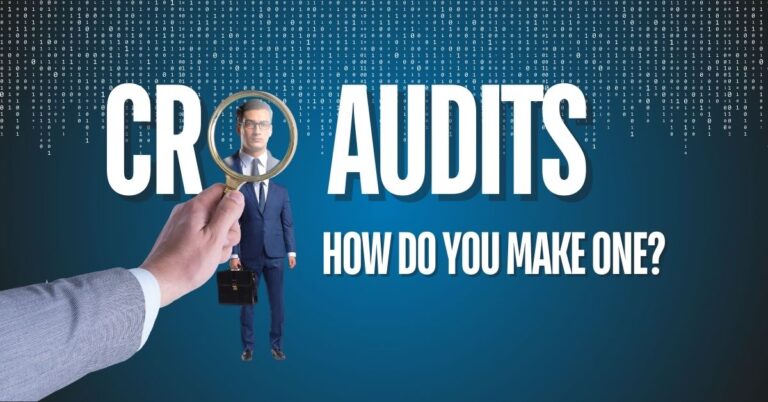48 Brand Manager Interview Questions with Answers [2024 Update]
Getting called for a Brand Manager interview can feel like a big win after all the effort you’ve put into your job applications. You’ve polished your resume, crafted engaging cover letters, and now it’s your chance to show what you can bring to the table.
But now, there’s only one thing that’s stopping you—and it’s the interview.
‘What type of questions am I going to be asked?‘, ‘Am I even ready for an interview?‘, ‘What did I eat last night? I can’t even remember that, oh my God.’
These are likely the things popping through your head. But don’t worry, because we’re here to ease that up by presenting you with tons of possible interview questions that the hiring manager might ask you in your upcoming Brand Manager interview.
So buckle up and enjoy the ride, because this article is going to help you ace that interview with flying colors.
With that said—let’s get started!
What Are the Best Interview Questions to Ask for a Brand Manager Position Right Now?
Here is a robust list of questions that you can take note of, ranging from behavioral to company-specific questions. Check each one to make sure you’ve covered everything!
Brand Manager Behavioral Interview Questions
1. Tell me about a time when you had to manage conflicting deadlines. How did you prioritize your tasks?
Discuss how you evaluate the urgency and importance of each task. Explain the methods you use to prioritize work, such as using prioritization matrices or tools like the Eisenhower Box.
Example Answer
“In my previous role, I often faced conflicting deadlines. To manage this, I prioritized tasks based on their impact on our business goals and their deadlines. For instance, I once had to balance preparing a report for a client presentation while overseeing a product launch. I delegated some preparatory tasks for the presentation to trusted team members, focused my efforts on critical launch activities, and scheduled strict blocks of time to finalize the report.”
2. Describe a situation where you had to adapt quickly to changes. How did you handle it?
Show your flexibility and problem-solving skills. Describe a specific instance where you had to adapt to a sudden change and the steps you took to successfully navigate the situation.
Example Answer
“During a major product rollout, we received feedback that a key feature was underperforming. I quickly organized a meeting with the product and engineering teams to brainstorm solutions. We decided to modify the feature and communicated the changes to our customers through targeted emails and social media updates, effectively managing expectations and mitigating any dissatisfaction.”
3. Can you provide an example of a project that didn’t go as planned? What did you learn from that experience?
Focus on your ability to learn from experiences. Describe the project, what went wrong, how you addressed the issue, and what you learned.
Example Answer
“I led a marketing campaign aimed at a new demographic, but initial responses were underwhelming. I analyzed engagement data and realized our message didn’t resonate with the audience. We regrouped, adjusted our messaging based on customer feedback, and relaunched the campaign. This experience taught me the importance of ongoing testing and adaptation in marketing strategies.”
4. Tell me about a time you led a team. What was the outcome?
Highlight your leadership style and the result of your leadership. Discuss how you motivated the team, overcame challenges, and the outcome of the project or initiative.
Example Answer
“I once led a team on a tight deadline project that required collaboration across different departments. By setting clear goals, facilitating daily check-ins, and encouraging open communication, we completed the project ahead of schedule. This experience reinforced my belief in the power of transparency and proactive leadership in achieving team success.”
5. Describe a time when you had to deliver difficult feedback. How did you manage that conversation?
Explain your approach to ensure the feedback is constructive. Describe how you prepare, the setting you choose, and how you follow up to support improvement.
Example Answer
“I had to provide feedback to a normally high-performing employee who had been missing deadlines. I chose a private setting to ensure a comfortable atmosphere and used specific examples to outline my concerns. We discussed potential reasons and solutions together, leading to a performance improvement plan that we reviewed monthly. This approach helped maintain our relationship and supported their professional growth.”
6. Tell me about a time when you had to resolve a conflict within your team.
Show your mediation skills. Describe the conflict, your role in resolving it, and the outcome.
Example Answer
“When two team members disagreed over a project’s direction, I facilitated a mediation session where each expressed their views. We found a compromise by integrating elements from both suggestions, which not only resolved the conflict but also enhanced the project. This taught me the value of listening and the creative potential of diverse viewpoints.”
7. Describe a situation where you needed to get information from someone who was unresponsive. What approach did you take?
Discuss your persistence and communication strategies. Explain how you handle situations where you need essential information from someone who is not responding.
Example Answer
“I needed crucial data from a colleague who was unresponsive. I initially tried emails and then phone calls with no success. I then reached out via a short, polite message on LinkedIn, which caught their attention. We set up a brief meeting to discuss the data needed. This situation highlighted the importance of adapting communication methods based on the person and context.”
8. Give me an example of a time when your team had to meet a tight deadline. How did you ensure all tasks were completed on time?
Explain the context of the tight deadline and the tasks that needed to be completed. Discuss your role in organizing the team’s efforts, the methods you used to prioritize tasks, and any specific strategies you implemented to manage time effectively. End with the outcome, emphasizing your ability to deliver under pressure.
Example Answer
“In my previous role, we had a project due in two weeks that typically would take a month. I immediately organized a kickoff meeting to set clear goals and delegate tasks. We used a daily stand-up meeting to track progress and address any bottlenecks quickly. I also extended work hours with management approval. Thanks to these efforts, we not only met the deadline but also delivered a high-quality project, which significantly boosted team morale and client satisfaction.”
9. Talk about a time when you had to make a difficult decision. How did you arrive at your decision and what was the outcome?
Describe the situation requiring a tough decision and outline the options you considered. Explain the process you used to weigh the pros and cons, including any consultation with stakeholders or data analysis. Conclude by discussing the decision’s impact.
Example Answer
“When I was managing a product launch, we encountered a major issue with a key feature that could delay our release. After reviewing the situation with the development team and assessing our timelines, I decided to launch without that feature to maintain our market entry timing. We communicated this effectively to our customers with a promise to update soon. The product was well-received, and the feature was successfully integrated later, which maintained our credibility and customer trust.”
10. When have you had to convince others to adopt your point of view? What strategies did you use?
Talk about a specific instance where you needed to persuade others. Highlight your communication strategy, including how you presented facts, listened to concerns, and adapted your message for your audience. Mention the outcome.
Example Answer
“In a previous role, I proposed switching to a new project management tool that I believed would enhance efficiency. Facing initial resistance, I gathered success stories from other companies and arranged a demo from the vendor. I also addressed concerns by proposing a phased rollout. My colleagues agreed to a trial, which soon led to a full implementation after they experienced the benefits firsthand.”
11. Describe a time when you had to deal with a problematic employee’s behavior. How did you handle the situation?
Describe the situation with the employee and your immediate steps to understand the behavior. Explain how you addressed the issue, including any discussions or disciplinary actions taken. Focus on the importance of maintaining a positive work environment and the resolution.
Example Answer
“I once managed a team member who was consistently missing deadlines, affecting team morale. I scheduled a private meeting to discuss the issues. It turned out he was overwhelmed with his workload. We worked on time management skills and reassigned some of his tasks to other team members. His performance improved, and so did the team’s overall productivity and atmosphere.”
12. Tell me about a project you initiated that benefited your team or organization. What was your role and the impact?
Highlight a project you started, detailing the initial challenges and the objectives you aimed to achieve. Discuss your role in the project and the strategies you used to lead it. Conclude with the project’s impact on the team or organization.
Example Answer
“I initiated a ‘Green Office’ project aimed at reducing waste. I led the campaign, starting with simple steps like installing recycling bins and optimizing digital processes to reduce paper use. Not only did we reduce waste by 40%, but we also engaged the team in environmental sustainability, which boosted our company’s image and employee satisfaction.”
Brand Manager Situational Interview Questions
13. How would you handle a situation where your team strongly disagrees with your strategy?
Describe how you would address the situation where your team disagrees with your strategy. Emphasize open communication, listening to concerns, and assessing all viewpoints before making adjustments if necessary. Highlight your commitment to team collaboration and consensus-building.
Example Answer
“If my team disagreed with my strategy, I would first ensure I fully understand their concerns through a detailed discussion. I would invite alternative proposals and evaluate them collectively, highlighting the pros and cons of each. By integrating feedback and showing flexibility where possible, I aim to build a revised strategy that aligns better with the team’s insights while still meeting our objectives.”
14. Imagine our company is entering a new market, and you are in charge of the brand strategy. What steps would you take?
Talk about the steps you would take to develop a brand strategy for entering a new market. Mention conducting market research, understanding customer demographics, and competitive analysis. Discuss how you would use this data to craft a tailored marketing strategy that addresses local preferences and needs.
Example Answer
“Entering a new market requires thorough research and planning. I would start by analyzing the market for trends, competition, and consumer behavior. Collaborating with local experts and using data analytics, I’d adapt our brand message to resonate with the new audience. My strategy would focus on localized marketing initiatives and partnerships that could help establish our presence effectively.”
15. Suppose you have limited resources for a campaign you’re managing. How would you ensure its success?
Explain how you would maximize limited resources in a campaign. Discuss prioritizing key activities that drive the most value, leveraging low-cost digital channels, and optimizing the use of existing assets.
Example Answer
“With limited resources, I focus on efficiency and impact. I would prioritize activities with the highest return on investment, such as digital marketing and social media engagement, and use cross-promotion with other ongoing campaigns. Regular monitoring and agile methodologies would allow us to adjust swiftly and optimize resource allocation throughout the campaign.”
16. What would you do if you received negative feedback on a major project you led?
Describe your approach to handling negative feedback on a major project. Emphasize your responsiveness, openness to constructive criticism, and how you would use feedback for improvement.
Example Answer
“When faced with negative feedback, I take it as an opportunity to improve. I would analyze the feedback, identify valid points, and discuss with my team how we can address these issues. Implementing changes quickly and efficiently demonstrates our commitment to excellence and responsiveness to our audience.”
17. How would you manage a situation where a key piece of your marketing campaign did not go as planned right before launch?
Discuss your strategy for managing unexpected issues during a critical time. Highlight your ability to stay calm, think critically, and communicate effectively under pressure.
Example Answer
“If a key piece of our campaign faltered before launch, I would assess the impact and explore immediate solutions. Communicating transparently with stakeholders about the issue and proposed solutions is crucial. I would then mobilize the team to implement the fixes, ensuring minimal impact on the launch.”
18. If you notice a decline in brand engagement, what steps would you take to address it?
Outline your approach to revitalizing brand engagement. Discuss analyzing engagement metrics to pinpoint issues, enhancing content strategy, and possibly re-engaging audiences through innovative campaigns or outreach.
Example Answer
“To address a decline in brand engagement, I would first analyze engagement metrics to identify trends and areas of concern. Based on this data, I would enhance our content strategy to better align with audience interests and increase interaction through targeted campaigns, possibly incorporating feedback mechanisms to gather direct insights from our audience.”
19. How would you respond if a competitor launched a product that directly competes with one of our key products?
Discuss how you would analyze the competitor’s product and its market impact. Emphasize strategies such as enhancing your product’s unique selling propositions, marketing aggressively, and possibly exploring product improvements or innovations.
Example Answer
“If a competitor launched a product that competes with ours, I would start by conducting a thorough competitive analysis to understand their strengths and weaknesses. Based on this, I would strategize on enhancing our product’s unique features and communicate these effectively to our customers through targeted marketing campaigns, ensuring our product remains a preferred choice.”
20. What approach would you take if you had to quickly increase brand awareness for a new product?
Outline a multi-channel approach that leverages both digital and traditional marketing methods. Highlight quick-win tactics like influencer partnerships, social media campaigns, and promotional events.
Example Answer
“To quickly boost brand awareness for a new product, I would implement an integrated marketing strategy that includes social media blitzes, influencer collaborations, and PR events. These efforts would be aimed at creating buzz and visibility, leveraging both online and offline platforms to reach a broad audience efficiently.”
21. If tasked with improving our brand’s market position, what initial steps would you take?
Explain the initial steps such as market research to identify current brand perception and competitor analysis. Discuss forming a strategy based on these insights to enhance the brand’s offerings and communication.
Example Answer
“The first step in improving our brand’s market position would involve detailed market research and competitor analysis. This would help us understand our current standing and identify areas for improvement. I would then focus on differentiating our brand through superior customer experiences, improved product offerings, and effective communication strategies.”
22. How would you approach managing a team that is resistant to new ideas or change?
Emphasize the importance of communication, understanding their concerns, and gradually introducing changes. Mention engaging the team with training sessions and demonstrating the benefits of new ideas.
Example Answer
“To manage a team resistant to change, I would first seek to understand their apprehensions through open dialogues. By gradually introducing changes and involving the team in the decision-making process, along with training and clear demonstrations of the benefits, I would work to garner their support and ease the transition.”
23. What steps would you take to revitalize a product that is not performing well in the market?
Talk about evaluating the product’s current market performance, customer feedback, and competitive positioning. Describe how you would use this information to adjust the product strategy, possibly rebranding or repositioning the product.
Example Answer
“To revitalize a product not performing well, I’d start with a deep dive into customer feedback and sales data to pinpoint issues. Depending on the findings, strategies such as rebranding, adding new features, or adjusting pricing could be considered to reposition the product more favorably in the market.”
24. How would you handle a situation where an important stakeholder disagrees with your brand strategy?
Stress the importance of diplomacy and open communication. Explain how you would present data and research to support your strategy, and discuss the possibility of finding a compromise that aligns with both your vision and the stakeholder’s concerns.
Example Answer
“When facing disagreement from a key stakeholder, I would present comprehensive data and rationale behind my strategy, ensuring transparency. I would listen to their concerns and seek to find common ground or adjust the strategy where possible to accommodate their views while still striving to meet the company’s goals.”
Role-Specific Brand Manager Interview Questions
25. What key performance indicators do you think are most critical for a brand manager to monitor?
Identify and discuss several KPIs that are essential for tracking the success of brand management efforts, such as brand awareness, customer engagement rates, conversion rates, and customer loyalty metrics.
Example Answer
“As a brand manager, it’s crucial to monitor a variety of KPIs to gauge brand health accurately. Brand awareness, measured through survey data and social media mentions, gives insights into the reach of the brand. Engagement and conversion rates from marketing campaigns indicate the effectiveness of our strategies in driving actions. Lastly, customer loyalty and retention rates help us understand long-term satisfaction and engagement.”
26. Can you describe a complex project you managed from start to finish? What strategies did you employ?
Describe a complex project, detailing your role, the challenges faced, and the strategies you used to manage and complete the project successfully.
Example Answer
“I led a rebranding project for a mid-sized retail company, which involved multiple stakeholders and tight deadlines. My strategy involved setting clear milestones, regular stakeholder meetings to ensure alignment, and risk management plans to handle potential issues. By maintaining open communication and leveraging agile project management techniques, we successfully launched the new brand identity on time and within budget.”
27. What methods do you use to track project progress and ensure that team members are aligned with goals?
Explain the methods and tools you use to track project progress and keep team members aligned, emphasizing the importance of transparency and regular updates.
Example Answer
“To track project progress, I rely on a combination of project management software like Asana for task tracking and regular stand-up meetings to quickly address any delays or issues. This ensures that all team members are on the same page and can easily see how their work contributes to overall project goals, fostering a collaborative and productive environment.”
28. Discuss your experience with consumer insight analysis. How have you used this data in your past roles?
Discuss how you gather and analyze consumer insights and the impact of this data on your marketing strategies.
Example Answer
“In my previous role, I utilized consumer insight data from surveys, focus groups, and online behavior analytics to understand customer preferences and pain points. This data informed our product development and marketing strategies, allowing us to tailor our offerings to better meet consumer needs and significantly improve our market positioning.”
29. How do you stay updated with market trends and incorporate them into your branding strategies?
Share your approach to staying informed about industry trends and how you integrate this knowledge into your branding strategies.
Example Answer
“I stay updated with market trends by subscribing to leading industry publications, attending webinars, and participating in relevant conferences. This knowledge helps me anticipate market shifts and adapt our branding strategies proactively, ensuring our brand remains relevant and competitive.”
30. What strategies have you used in past roles to increase brand loyalty?
Describe the strategies you’ve implemented in the past to build and maintain brand loyalty.
Example Answer
“To increase brand loyalty, I’ve focused on creating personalized customer experiences through segmented marketing campaigns and loyalty programs. By rewarding repeat customers and providing them with tailored content and offers, we’ve seen a significant increase in customer retention rates and word-of-mouth referrals, which are key indicators of strong brand loyalty.”
31. Can you explain how you have used digital marketing tools to enhance brand visibility?
Explain the digital marketing tools you’ve used (e.g., SEO, PPC, social media platforms, email marketing) and describe how you integrated them into your marketing strategies to boost brand visibility.
Example Answer
“In my last role, I leveraged a combination of SEO, targeted pay-per-click campaigns, and robust social media strategies to enhance brand visibility. By optimizing our website content for search engines and deploying targeted ads to specific demographics, we saw a 30% increase in website traffic and a significant boost in engagement on our social media platforms.”
32. What experience do you have with budget management for marketing campaigns?
Discuss your approach to budgeting for marketing campaigns, including how you allocate funds and monitor spending to maximize ROI.
Example Answer
“My experience with budget management involves strategic allocation of funds across various channels to ensure optimal spend and ROI. For instance, I regularly review campaign performance analytics to adjust allocations, focusing more on high-performing channels. This approach helped us reduce costs by 20% while increasing campaign effectiveness.”
33. How do you evaluate the success of a marketing campaign?
Describe the metrics you consider (like conversion rates, engagement levels, ROI) and how you use data to assess the effectiveness of marketing campaigns.
Example Answer
“I evaluate the success of marketing campaigns by tracking key performance indicators such as conversion rates, engagement levels, and overall ROI. I use analytics tools to monitor these metrics in real-time, allowing us to make data-driven adjustments to the campaign strategy to enhance performance continuously.”
34. Describe your experience with crisis management related to brand reputation.
Share a specific instance where you managed a crisis affecting the brand’s reputation, outlining the steps you took to mitigate the situation.
Example Answer
“During a product recall, I led our crisis management efforts by coordinating a transparent communication strategy across all platforms, addressing consumer concerns directly and efficiently. We managed to not only contain the situation but also to rebuild trust, resulting in a 75% recovery in customer confidence within three months.”
35. How do you ensure alignment with the overall business strategy in your branding efforts?
Discuss how you ensure that branding efforts align with the broader business goals and strategy of the organization.
Example Answer
“I ensure alignment with our overall business strategy by collaborating closely with various department heads to understand their goals and challenges. This collaboration allows us to develop cohesive branding efforts that support wider business objectives, such as entering new markets or enhancing customer loyalty.”
36. What has been your most successful brand campaign to date and why?
Describe your most successful brand campaign, focusing on your role, the strategy employed, and the reasons for its success.
Example Answer
“My most successful campaign involved launching a new product line targeted at millennials. I developed a cross-channel marketing strategy using influencer partnerships and interactive social media campaigns to engage this demographic. The campaign resulted in a 50% increase in product sales and significantly boosted our brand’s visibility and appeal among younger consumers.”
Company-Specific Questions
37. What aspects of our company’s brand strategy do you find most effective, and why?
Research the company’s current brand strategy beforehand. Highlight specific aspects you find effective, such as their digital marketing approach, customer engagement, or innovative product positioning. Explain why these elements are successful from a branding perspective.
Example Answer
“I find your company’s use of storytelling in marketing campaigns particularly effective. It not only enhances brand recall but also emotionally connects with the audience, fostering a strong brand loyalty. This approach aligns perfectly with the growing consumer preference for brands that offer more than just a product but also share values and stories they can relate to.”
38. How would you apply your experience to address the specific challenges our brand is currently facing?
Discuss your understanding of the challenges the company is facing, which could be related to market competition, changing consumer preferences, or technological advancements. Explain how you would use your experience to develop strategies to address these challenges.
Example Answer
“Considering the challenge of market saturation, I would leverage my experience in market segmentation and targeted marketing to differentiate our brand and create more tailored value propositions that speak directly to distinct customer segments, thereby enhancing our competitive edge.”
39. Can you give an example of how you would foster a connection between our brand and our target audience, based on your understanding of our company values?
Explain how you would use the company’s values to strengthen connections with the audience. Mention specific strategies like community engagement, CSR initiatives, or value-driven marketing.
Example Answer
“Based on your company’s commitment to sustainability, I would initiate a campaign that invites customers to join in on environmental conservation efforts. This could include interactive social media challenges and partnerships with eco-friendly organizations, aligning with your values and engaging our target audience in meaningful ways.”
40. What do you perceive as the biggest threat to our brand in the current market, and how would you counteract it?
Identify a current market threat—such as new competitors or changing regulations—and discuss strategic actions to mitigate this threat.
Example Answer
“The biggest threat is the rapid technological change that could make some of our products obsolete. To counteract this, I would focus on accelerating our product innovation pipeline and enhancing our digital presence to stay ahead of tech trends and meet evolving consumer expectations.”
41. How would you leverage our company’s strengths to improve our market position?
Identify key strengths of the company, such as strong customer loyalty, a broad product portfolio, or advanced R&D capabilities. Discuss how you could leverage these strengths to enhance the company’s market position.
Example Answer
“With our strong R&D capabilities, I see an opportunity to enhance our market position by developing cutting-edge products that meet untapped consumer needs. By leading the market in innovation, we can not only retain our loyal customers but also attract new ones looking for the latest offerings.”
42. Describe how you would integrate our company values into a new marketing campaign.
Describe how you would incorporate the company’s core values into new marketing initiatives, ensuring that every campaign reflects and reinforces these values.
Example Answer
“I would design a marketing campaign that highlights our commitment to quality and customer satisfaction. This could involve sharing behind-the-scenes content on product development processes, showcasing our attention to detail, and customer testimonials to reinforce our brand’s dedication to delivering exceptional value.”
43. What changes would you make to our current branding strategy to increase customer engagement?
Identify elements in the current branding strategy that could be enhanced to increase engagement, such as social media interactions, content marketing, or community involvement.
Example Answer
“To increase customer engagement, I would introduce more interactive content and real-time engagement opportunities on our social media platforms, such as Q&A sessions, live product demonstrations, and customer-driven content challenges. These initiatives encourage active participation and create a more dynamic relationship between the brand and its audience.”
44. How would you approach a rebranding initiative for our company?
Discuss your steps for a rebranding initiative, including conducting thorough market and internal brand audits, engaging with stakeholders, and developing a rebranding strategy that aligns with business objectives.
Example Answer
“For a rebranding initiative, I would start with a comprehensive brand audit to understand perceptions of the current brand internally and externally. Following this, I would engage with key stakeholders to align on the vision and objectives of the rebrand. The strategy would involve a phased rollout of the new brand identity, supported by a strong communication plan to ensure a smooth transition and clear messaging to our customers.”
45. If hired, what would be your first steps to understand our brand’s position in the market better?
Explain the initial steps you would take to assess the brand’s current market position, such as analyzing market trends, competitor analysis, and customer feedback.
Example Answer
“My first step would be to conduct a competitive analysis and gather insights from customer feedback to gauge our brand’s current standing in the market. This would involve utilizing both quantitative data from market research and qualitative insights from social media and customer surveys to get a comprehensive view of our brand’s perception and performance.”
46. How do you see our brand evolving over the next five years, and how would you contribute to this evolution?
Provide a vision of how you see the brand evolving, including potential new markets, product innovations, or marketing strategies.
Example Answer
“Over the next five years, I see our brand expanding into emerging markets and enhancing our digital presence. I would contribute to this evolution by spearheading initiatives in sustainability and technology integration, ensuring that our brand remains relevant and competitive by adapting to global trends and consumer expectations.”
47. What strategies would you implement to enhance our brand’s visibility and differentiation in a crowded market?
Describe strategies to enhance brand visibility and differentiation, such as unique branding elements, targeted marketing campaigns, or partnerships.
Example Answer
“To enhance visibility and differentiation, I would focus on leveraging unique aspects of our brand story and values in all communications. Additionally, I’d explore strategic partnerships with complementary brands and influencers to reach new audiences and reinforce our brand’s unique position in a crowded market.”
48. Based on what you know about our company, what new markets would you consider entering, and why?
Discuss new markets that align with the company’s strengths and market trends, explaining why these markets are a strategic fit.
Example Answer
“Based on our strong performance in health-conscious segments, I would consider entering the rapidly growing plant-based product market. This move aligns with global health trends and our brand’s commitment to sustainability and wellness, offering significant growth potential and resonating well with our target demographics.”
Tips for Passing Your Brand Manager Interview
Use the methods and tips below to help you land this role.
Use the STAR Method
Organize your responses with the STAR method (Situation, Task, Action, Result). It helps you tell your story effectively, showing how you’ve tackled challenges and achieved results.
Know Your KPIs
Be ready to talk about key performance indicators like brand awareness and social media metrics. Demonstrating your knack for analyzing these numbers shows you can steer brand strategies based on solid data.
Understand Global Nuances
If you’re working with global brands, show you get the complexities of different cultures and markets. This means talking about how you’d tailor strategies to fit diverse audiences without stepping on cultural toes.
Show Off Your Crisis Skills
Talk about a time you handled a brand crisis. Being able to manage a sticky situation smoothly proves you can keep cool and lead well when it really counts.
Align with the Company
Make sure your answers reflect the company’s values and goals. This shows you’re not just a fit for the role technically but also mesh well with their culture and vision.
Conclusion
At JWR, your success in passing the brand manager interview is as important to us as it is to you. Consider exploring our blog for more topics, such as “How to Write a Proposal on Upwork That Works,” “75 SEO Interview Questions for Beginners to Experts,” and many more.
We hope this guide helps you ace your interview. If you have any additional questions, feel free to leave a comment below.
As always, take care!
Additional Related Questions
Check out these FAQs for more information on brand manager interview questions.
How should a brand manager prepare for questions on digital marketing trends?
A brand manager should stay updated on the latest digital marketing trends by following industry news, subscribing to marketing newsletters, and participating in relevant webinars and courses. When preparing for an interview, they should be ready to discuss how these trends could impact the brand’s strategy and suggest ways to leverage new tools and platforms to enhance brand engagement.
What are some common mistakes to avoid during a brand manager interview?
Common mistakes include failing to research the company and its brand strategy thoroughly, not having a clear understanding of the key performance indicators for brand management, and being unable to provide specific examples of past successes or challenges. Candidates should also avoid vague responses and ensure they communicate their ideas clearly and effectively.
How can a brand manager demonstrate their creativity in an interview?
Brand managers can showcase their creativity by discussing past campaigns where they implemented innovative strategies to overcome challenges or capture market attention. They should bring a portfolio of work that includes examples of their branding efforts, campaigns, and outcomes. Discussing how they approach problem-solving and adapt campaigns to resonate with different audiences also reflects creativity.
What questions should candidates ask at the end of a brand manager interview?
Candidates should ask about the company’s vision for the brand, challenges the brand is currently facing, and the expectations for the role in the context of the company’s broader marketing strategy. Inquiring about team dynamics and how the marketing department collaborates with other units within the company can also provide deeper insight into the role.
How important is industry knowledge for a brand manager role, and how can candidates demonstrate this during an interview?
Industry knowledge is crucial as it helps brand managers understand market dynamics, customer behavior, and competitive landscapes. Candidates can demonstrate this by discussing industry trends, key competitors, and potential growth opportunities during the interview. They should also relate their past experiences and successes to the specific industry in which the company operates.


![13 BEST Online Jobs for Students in the Philippines [Easy Apply]](https://www.juanremotework.com/wp-content/uploads/2024/08/female-student-thats-carrying-books-with-a-blue-background-768x402.jpg)




